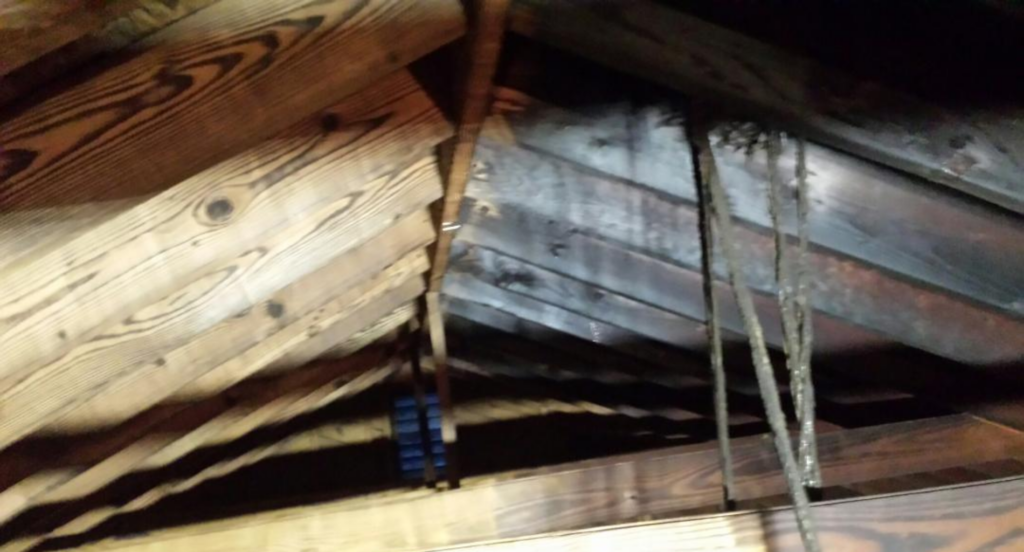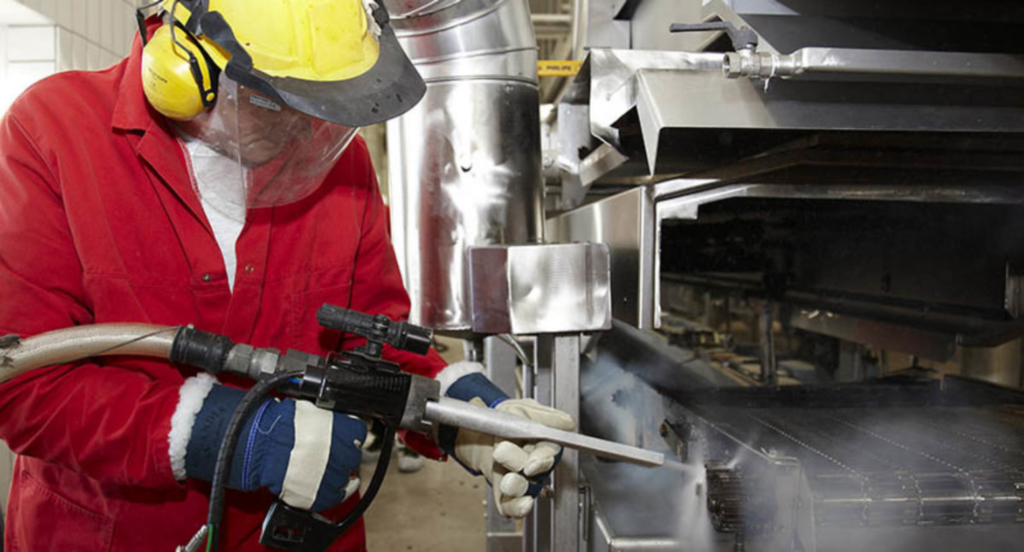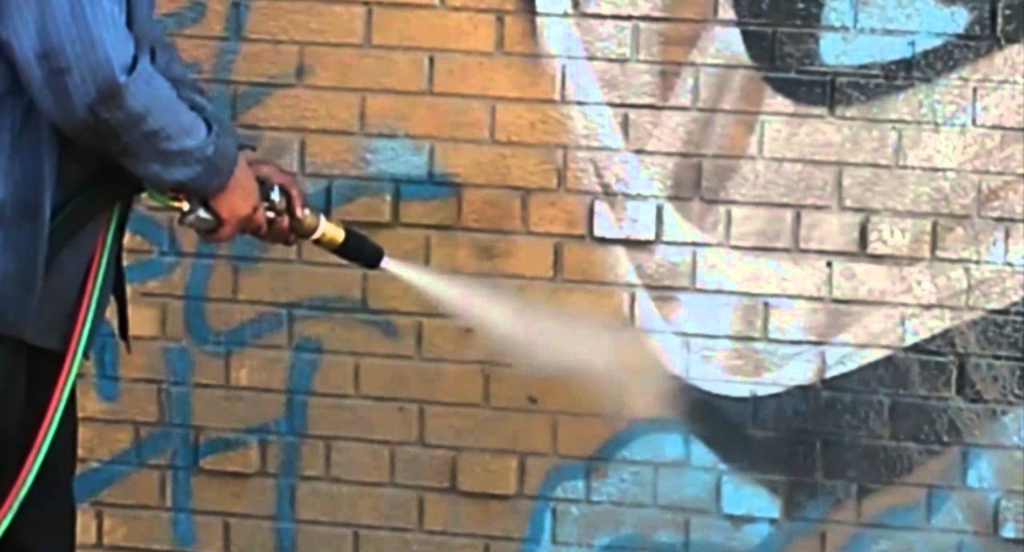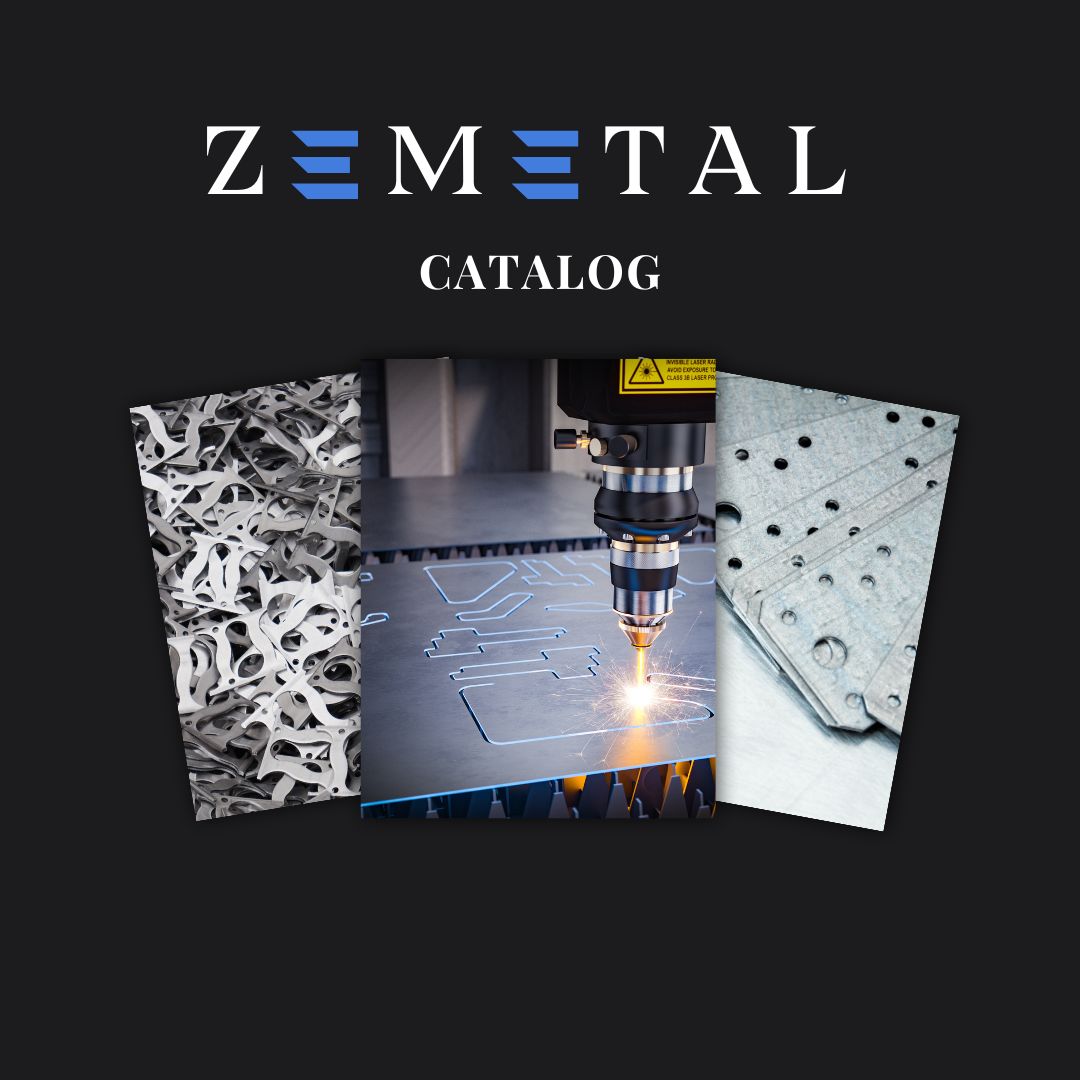Ever wondered how surface preparation can significantly impact the quality and longevity of your metal products? Sandblasting and soda blasting are two methods in the metal fabrication industry, each with its unique advantages and applications.
As an expert in metal fabrication, I bring years of hands-on experience and in-depth knowledge to the table. My insights are rooted in industry best practices and continuous learning from field applications.
Sandblasting and soda blasting differ in their abrasiveness and impact on the metal surface. Sandblasting, known for its aggressive approach, while soda blasting is much gentler, ideal for delicate surfaces.
In this guide, we will delve into the specifics of each method, comparing their effectiveness, applications, and impact on various metals. You will learn which method is best suited for your specific needs, ensuring high-quality results for your projects.
Read on to for a detailed comparison.
1. Importance of Surface Preparation in Various Industries
Surface preparation is a critical step in various industries, especially in metal fabrication. It’s not just about aesthetics; it’s about ensuring the longevity and functionality of the final product. Whether it’s for automotive parts, construction materials, or precision instruments, the way a metal surface is prepared determines its adherence to coatings, resistance to corrosion, and overall durability.
In industries like aerospace, automotive, and construction, the stakes are even higher. A poorly prepared surface can lead to failures in structural integrity or protective coatings. This is where techniques like sandblasting and soda blasting come into play. They provide a reliable foundation for subsequent processes such as painting or welding, thereby ensuring that the end products meet stringent industry standards.
2. Understanding Sandblasting
Building on the importance of surface preparation in various industries, sandblasting emerges as a standout technique for its efficacy. Variations of sandblasting are employed across multiple sectors, each tailored to the specific requirements of the material and end-use.
Applications
- Automotive Industry: In the automotive sector, sandblasting is extensively used for removing old paint, rust, and surface impurities from vehicle bodies and parts. This process is essential for preparing vehicles for repainting or restoration, ensuring a smooth and clean surface that enhances paint adherence and overall finish.
- Construction and Restoration: Sandblasting is recognized as a vital method in the construction and restoration sectors. As per EMR, the construction market will reach $23.92 trillion by 2032. This growth shows the value of effective methods like sandblasting, ensuring businesses in metal fabrication remain aligned with the evolving needs of the construction sector.
- Marine Industry: The marine industry relies on sandblasting for maintaining and refurbishing ships and boats. It effectively removes barnacles, rust, and old coatings from hulls, preparing them for repainting and extending their service life in harsh marine environments.
- Heavy Machinery: In the maintenance of heavy machinery and industrial equipment, sandblasting is used to clean and remove corrosion, paint, and contaminants. This helps in maintaining the machinery and prepares surfaces for repainting, essential for prolonging equipment lifespan.
Advantages
- Deep Cleaning and Surface Etching: Sandblasting is highly effective at deep cleaning surfaces, removing layers of rust, old paint, and other stubborn coatings. This deep etching not only cleans but also creates a roughened surface texture, which is ideal for the adhesion of new coatings.
- Speed and Efficiency: Sandblasting is a swift process compared to manual cleaning methods. For instance, it’s ability to cover large areas quickly, significantly reducing labor time and cost. This speed is especially beneficial in industrial settings where downtime can be costly, allowing for quicker turnaround on projects.
- Versatility: One of the most significant advantages of sandblasting is its versatility. It can be used on various materials, including metals, concrete, and wood, making it suitable for a wide range of applications. The adjustability of pressure and choice of media allow it to be tailored to different surface requirements.
- Surface Preparation for Coating: Sandblasting provides an excellent surface for coating applications. By removing all surface contaminants and creating a uniform texture, it ensures that coatings adhere properly and last longer. Zemetal utilizes this method to prepare surfaces, ensuring optimal coating adhesion and longevity in their metal fabrication projects.
Drawbacks
- Potential Health Hazards: Sandblasting can produce harmful dust and silica, posing significant health risks to operators without proper protective gear and ventilation.
- Surface Damage on Delicate Materials: The abrasive nature of sandblasting can damage softer or more delicate surfaces, making it unsuitable for certain materials or finishes.
- Environmental Concerns: The process can generate a considerable amount of waste and environmental pollutants, requiring careful waste management and environmental safeguards.
3. Exploring Soda Blasting
Transitioning from the more abrasive sandblasting, soda blasting offers a gentler alternative, ideal for delicate tasks. Variations of soda blasting cater to specific needs, balancing delicacy with effectiveness in surface preparation.
Applications
- Automotive Restoration: Soda blasting is a go-to choice in automotive restoration, particularly for vintage and classic cars. It removes paint and surface contaminants without harming the underlying metal or delicate parts. This method preserves the originality of vehicles while preparing them for restoration.

- Fire Damage Restoration: In the aftermath of fires, soda blasting is used to clean and deodorize structures and surfaces. It effectively removes soot and char without damaging the underlying materials, making it an essential tool in the restoration process to bring buildings back to their pre-damage state.

- Food Industry Equipment Cleaning: The food industry benefits from soda blasting for cleaning equipment and machinery. Its non-toxic nature is making it safe for surfaces that come in contact with food products. Zemetal adopts this method ensuring cleanliness and safety in their food-related metal fabrication projects.

- Graffiti and Paint Removal: Soda blasting is effective for removing graffiti and unwanted paint from various surfaces, including walls and public structures. Its gentle approach ensures the underlying material, whether it be brick or metal, is not damaged, while effectively removing all traces of paint or graffiti.

Advantages
- Non-Abrasive Nature: Soda blasting is known for its gentle yet effective cleaning ability. Unlike more abrasive methods, it can safely be used on delicate surfaces without risking damage. This makes it ideal for projects where preserving the integrity of the surface is as important as cleaning it.
- Environmentally Friendly: The primary medium used in soda blasting, bicarbonate of soda, is environmentally benign. It’s non-toxic, biodegradable, and safe for the environment, which makes soda blasting a preferred choice in eco-conscious industries and applications.
- No Heat Generation: Soda blasting does not generate heat during the process, which eliminates the risk of warping or distorting the surfaces, especially metals. This is a critical advantage when working with thin metals or intricate components where maintaining structural integrity is paramount.
- Effective Paint Stripper and Deodorizer: This dual capability is particularly useful in automotive restoration, fire damage restoration, and in any scenario where removing old paint or neutralizing unpleasant odors is necessary without damaging the underlying material.
Drawbacks
- Limited Abrasiveness for Heavy Removal: Soda blasting is not as effective for removing heavy, thick coatings or significant corrosion due to its gentler nature.
- Residue Management: The process leaves a powdery residue that requires thorough cleaning, which can be time-consuming and may interfere with subsequent processes.
- Higher Cost: Soda blasting can be more expensive than traditional sandblasting due to the cost of materials and the need for specialized equipment to handle the soda medium.
4. Key Differences Between Sandblasting and Soda Blasting
After exploring the characteristics of soda blasting, it’s clear that while it shares some similarities with sandblasting, there are key differences that set them apart. Here’s a detailed comparison between the two methods:
Abrasiveness and Surface Impact
- Sandblasting: Sandblasting is significantly more abrasive than soda blasting. This high abrasiveness makes it efficient for removing tougher coatings and preparing more resilient materials. However, it can be too harsh for delicate surfaces, potentially causing etching or warping.
- Soda Blasting: Soda blasting is much gentler on surfaces. Its non-abrasive nature allows it to clean and prepare without causing damage to the substrate. This makes it ideal for delicate materials or when preserving the original surface is crucial.
Residue and Cleanup
- Sandblasting: The residue from sandblasting can be quite challenging to clean up, often requiring extensive post-blasting cleaning efforts. The abrasive media used in sandblasting can leave a significant amount of dust and debris, which might necessitate additional cleanup procedures.
- Soda Blasting: Soda blasting, in contrast, leaves a relatively easy-to-clean residue. The soda used as a blasting medium dissolves in water, facilitating easier and quicker cleanup.This is particularly advantageous in sensitive environments where extensive cleanup is impractical.
This table details the advantages of soda blasting, focusing on its easy-to-clean residue and suitability for sensitive environments where quick and minimal cleanup is essential.
| Advantage | Description | Importance in Sensitive Environments |
| Easy-to-Clean Residue | Soda dissolves in water for easy removal | Reduces cleanup time and effort |
| Minimal Environmental Impact | Non-toxic and non-hazardous blasting medium | Safer for use in delicate areas |
| Efficient Cleaning Process | Simplifies the post-blasting cleaning routine | Ideal for quick turnaround projects |
| Low Abrasiveness | Gentle on surfaces, reducing damage risk | Suitable for delicate or historic surfaces |
| Water Solubility | Facilitates thorough residue removal | Ensures clean and uncontaminated finish |
Effect on Subsequent Processes
- Sandblasting: Sandblasting creates a rough surface profile, which is excellent for mechanical adhesion of subsequent coatings. However, this roughness might require additional surface smoothing before certain types of finishes or treatments can be applied.
- Soda Blasting: Soda blasting leaves a relatively smooth surface, which may reduce or eliminate the need for additional surface preparation before painting or coating. This smoother finish can be advantageous when the final aesthetic is a priority or when using coatings that require a less aggressive surface profile.
5. 3 Tips for Making the Right Choice for Your Business
Recognizing the distinctions between sandblasting and soda blasting is essential in selecting the most suitable method for your specific business needs. The choice you make should align to your project needs. Here are the tips you should consider:
#1 Understand Project End-Goals
Before deciding on a blasting method, clearly define the end-goals of your project. If your objective is to achieve a rough surface texture for strong adhesion of coatings, sandblasting is your likely choice. It’s especially suitable for industrial applications where durability is a priority.
However, if your project requires a delicate touch to preserve the original aesthetics or integrity of the surface, soda blasting should be your go-to method. It’s perfect for tasks like automotive restoration or working with fragile materials where preserving the original surface is crucial.
#2 Evaluate Cost and Project Scale
The scale of your project and budget constraints play a significant role in determining the suitable blasting method. For example, sandblasting is generally cost-effective for large-scale operations due to its efficiency in preparing extensive surfaces quickly. In contrast, soda blasting, though expensive, is better suited for specialized tasks where the gentle nature of the method is crucial.
#3 Consider Environmental and Safety Factors
Environmental and safety considerations are crucial in choosing the right blasting technique. Sandblasting requires stringent safety measures due to the potential health risks from dust and debris. This method also demands attention to waste management. On the other hand, soda blasting offers a safer and environmentally friendly option, with easier waste management, making it ideal for businesses prioritizing operator safety.
Conclusion
This guide sheds light on the key differences and applications of sandblasting and soda blasting, empowering you to make informed decisions for your business needs. Understanding these methods can significantly enhance the quality and efficiency of your metal fabrication processes.
If your business is seeking expert assistance in choosing between sandblasting and soda blasting, Zemetal is here to help. Contact us for personalized guidance and solutions tailored to your specific requirements.
Dive Deeper Into Our Resources
For some insightful reads, we’ve curated a list of recommended articles just for you:
Still haven’t found what you’re looking for? Don’t hesitate to contact us. We’re available around the clock to assist you.








